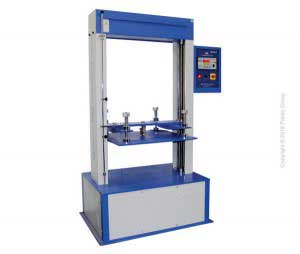Shipping industry deals with trillions of packaging transit including import and export business. The world relies on their services and trust that the material will delivered safe and sound to its destination. However, to have such reliability, the packaging material used must be strong enough to take the vertical load of storing and transit. While shipping the packages are often loaded in a packed structure so that they do not get enough space to move and slip away.
To achieve this, they load the containers or corrugated boxes on one another. Due to this particular set up, the box which is placed at the base will be taking the vertical load of other boxes placed on it. In case the box is strong enough and have that much of resistance towards the applied compression load, it will sustain otherwise it will buckle and get damaged under long applied load. Hence, it is of huge importance that the box compression resistance is tested using and ideal Box Compression Tester.
The testing machine is a twin column rugged structure which is specially designed to take up huge sized containers and boxes for testing. The compression plates are strong and is equipped with a highly advanced load cell. The device is responsible for an equal distribution of applied compressive load and keep the balance maintained. The uniform force distribution allow to apply the compression load on each and every single point of contact at the specimen top surface.
The test results which is the load value on which the box starts buckling or complete destruction is noted on the digitally based display. The display screen is controlled via the finest microprocessor program which converts the applied forc3es into digitally shown numerical value with high precision. Tester is designed using globally acclaimed testing standards such as – ASTM D642, ASTM D4169, TAPPI T804, ISO 12048, and JIS Z0212. Safety of the travelling process is assured by providing upward and downward safety limit switches. These switches help the operator to fix a specified and require travel length as per the testing and industry demand.
